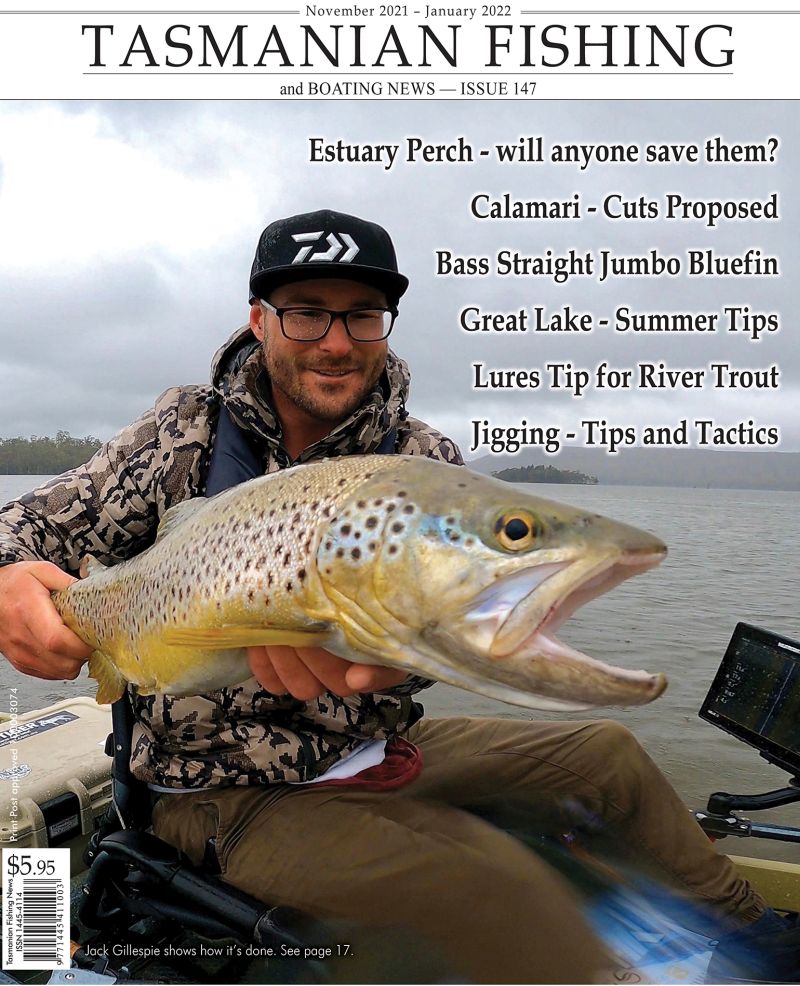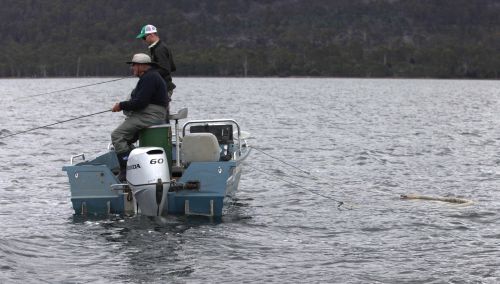From the Archives ...
Early season - Bob McKinley
Presented from Issue 105, August 2013
Bob is a professional fishing guide and guides for trout and estuary species. Check him out at www.fishwildtasmania.com
There are several things we look for in our early season trout waters. It is still winter and cold, so some of the things to consider are: Altitude as this dictates the water temperature and therefore feeding activity. Food for the fish. Availability of trout food is generally dictated by the quantity and quality of weed beds.
Quantity of fish.
Three waters which I believe fit all three requirements are:
Read more ...Please check all relevant authorities before fishing - www.ifs.tas.gov.au and dpipwe.tas.gov.au . Don't forget issuu.com/stevenspublishing for years of back issues !
If fly fishing is your passion then we need you to help keep the Australian Fly Fishing Museum open.
The Australian Fly Fishing Museum is a unique single subject museum housed at the National Trust Estate at Clarendon just south of Evandale Tasmania about 30 minutes south of Launceston and is open from 10am to 4pm Thursday to Sunday.
The museum houses a collection showing the history of Fly Fishing in Australia and has a well curated display of items which not only deal with the evolution and history, but also the art of fly fishing.
- Written by Stephen Smith - Rubicon Web and Technology Training
- Category: Fly Fishing
- Hits: 4324
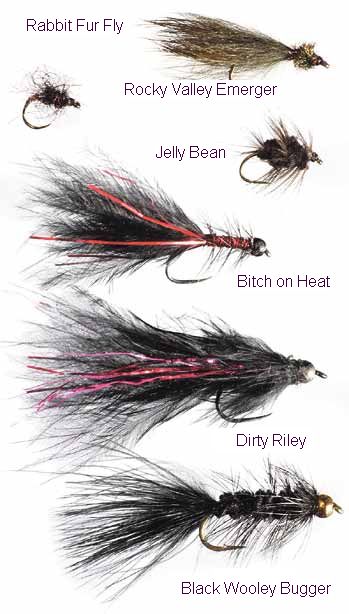 Presented from Issue 99
Presented from Issue 99
The early trout season is always a special time. High water levels with brown trout foraging for a meal close to the edges giving anglers a keenly awaited opportunity for sight fishing, hunting a moving quarry in the shallows as it pushes a bow wave or sends the tip of its tail through the surface as it picks up a morsel off the bottom.
There have been many developments with fly tying materials in recent years, a fly fishing shop contains more glitter and colour than a mardi gras in the fly tying section, but sometimes basic old fashioned patterns which have stood the test of time are the requirement for successful fishing. Flies that are basic in concept and design, simple but representative of life in basic dull natural colours.
- Written by Stephen Smith - Rubicon Web and Technology Training
- Category: Fly Fishing
- Hits: 9499
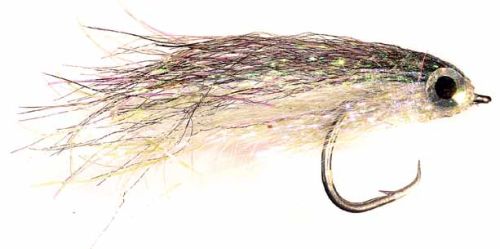 Jan's Flies Issue 99
Jan's Flies Issue 99
Presented from Issue 99
I suppose everybody is geared up for the new trout season. My start was during July by thoroughly cleaning up my fly tying studio. It is so nice to have everything so one can find things. It will be some time before the fish are seriously looking up so wets will be the go for me.
Exciter flies or lure flies will be my choice for action. May I suggest the use of two flies in a larger point fly with something smaller as a dropper. The point fly really needs to be at least four feet from the dropper.
Point patterns could include Yetis, Woolly Buggers, Matukas, Tom Jones, Wigram’s Robin and fur flies in various colours. For droppers, something quite small. This may be English wets, spider patterns are good tied with a really good moving hackle, nymph patterns dressed lightly as you must remember it is really early in the season and there is not much growth in any insects for the next couple of months.
- Written by Stephen Smith - Rubicon Web and Technology Training
- Category: Jan’s Flies
- Hits: 3905
Presented from Issue 98
Over early winter I spent some time on Tasmania’s beautiful east coast. With all that water beckoning me of course one would have to go fishing. Flathead would be the target but then I guess anything that may swim past get something thrown at them. Certainly there was a lot of salmon around, but the majority of schools I saw were too far away to cast to.
- Written by Stephen Smith - Rubicon Web and Technology Training
- Category: Jan’s Flies
- Hits: 3773
- Written by Stephen Smith - Rubicon Web and Technology Training
- Category: Trout Fishing
- Hits: 5988
Read more: Winter Trout The ‘off-season’ fix - If you need one !
 Presented from Issue 98
Presented from Issue 98
Wish list, bucket list, call it what you will, I think most of us have one. They seem to come about from conversations with other anglers about different places they have fished, things we have seen on TV or articles we have read in publications such as this one. Some of far-flung places and exotic species but others a little less expensive. This is certainly the case with me; some things just stick in my mind. An article I read many years ago by a well-known fishing journalist whose face adorns many soft plastic packets was fishing for garfish on fly. This undertaking was purely about familiarisation with his fly rod, before he went on a trip to New Zealand. It started out with some burley on the water to attract garfish in an estuary close his home and culminated in him standing up to his crown jewels, in his underwear, with two garfish stuffed down the back of his jocks and a fly hook firmly stuck in his finger. It was more than just the humour of the article that stuck with me and with my interest piqued, I told myself I’d have a crack at garfish on fly one day but I’d give the fish down the back of the jocks a miss! Fifteen years later Jamie Henderson asked me if I would like to spend the afternoon on George’s Bay chasing garfish. “Here is a chance to tick one off the bucket list” I thought and eagerly accepted.
- Written by Stephen Smith - Rubicon Web and Technology Training
- Category: Saltwater and Estuary Fishing
- Hits: 7357
If you are having trouble viewing this, click here to view in browser
FRDC FishFiles
Your haul of all things seafood
Welcome to the tenth edition of FishFiles!
This article has been modified in format only for Tasfish,com
This week the regular haggle of restaurant critics plumb the depths to explore everything from squid to scallop, salmon to kingfish, yabbies, prawns, lobster, octopus and mussels too.
At home, automated processing is elevating local Eastern School Whiting to the domestic marketplace, crowd-funding is helping to increase Macquarie perch populations and FRDC funding has helped connect chefs and professional fishing crews for the viewing pleasure of consumers on TV program Seafood Escape.
Meanwhile, further afield the Netherlands mussel industry is experiencing a boom borne of innovation. Global fishing vessel location data collected by satellites and run through advanced algorithms is drawing back the curtain on transshipping and the Independent explores the 'what ifs' for the global fishing industry through the global warming and nationalism looking glass.
New Zealand fisheries are exploring whether cameras will put an end to fish dumping and ensure all play by the rules, while in Australia some of the world's most innovative crime researchers are helping crab fishers put an end to theft.
Anthony Huckstep visited Tasman Sea Salt, a young company breathing life into the forgotten art of sea salt making, SBS tackled the fish pills verse eating fish health debate, also a neat FRDC video takes a look at PEJO Salt Water Barramundi in far North Queensland.
We hope you enjoy,
Peter Horvat
- Written by Stephen Smith - Rubicon Web and Technology Training
- Category: IFS, DPIPWE, MAST and Peak Bodies
- Hits: 4657
Read more: FRDC FishFiles - Your haul of all things seafood...
Lake Lynch has been closed - as quoted from the IFS website -
A small artificial waterbody in the Central Highlands will be closed for a period of time to allow the Inland Fisheries Service (IFS) to manage an established population of the introduced pest.
http://www.ifs.tas.gov.au/news/media-release-notice-of-closure-of-lake-lynch-in-the-central-highlands and in the news:
http://www.theadvocate.com.au/story/4539246/lake-closed-to-remove-introduced-yabbies/?cs=5312
- Written by Stephen Smith - Rubicon Web and Technology Training
- Category: IFS, DPIPWE, MAST and Peak Bodies
- Hits: 4850
Presented from Issue 98
Preparation Time: 10 minutes
Cooking Time: 4 minutes
Ingredients (serves 4 entree)
- 3 (about 600g) large cleaned squid hoods
- 1L (4 cups) vegetable oil
- 40g (1/4 cup) plain flour
- 1 tsp salt
- 1 tsp ground white pepper
- 1 tsp Chinese five-spice
- 1/2 tsp chilli powder
- Lemon wedges and soy sauce with sliced fresh red chilli, to serve
- Written by Stephen Smith - Rubicon Web and Technology Training
- Category: Cooking Fish
- Hits: 5666
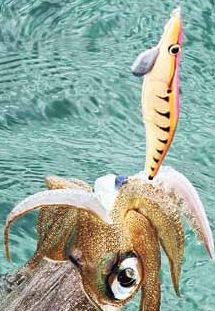 Presented from Issue 98
Presented from Issue 98
What is egi?
About 400 years ago a bloke in Japan was looking at squid in the harbour, while fishing, and thought there has to be a better way to catch these things. Until then the techniques were a dip net and teaser bait, cast or drag net. He studied the squid for some time and observed that the squid would prey on fish and shrimp as they slowed or stopped. After much trial and error he created an artificial bait that would suspend or sink very slowly in the water, and hopefully attract the squid to the artificial bait.
He called this artificial bait egi.
At that stage it did not have barbs on the lower part of the egi and was used to excite the squid to attack and come close enough to pick up with a dip net. After much success attracting squid to the egi, but still having difficulty netting squid more thought came into the design.
- Written by Stephen Smith - Rubicon Web and Technology Training
- Category: Saltwater and Estuary Fishing
- Hits: 13136
Read more: Egi and the squid - An unexplored Tasmanian sport fishery
Subcategories
Current TFBN
Click above for current issue content. The current issue of TFBN is extensive and topical. In Tackle Stores, Newsagents and by subscription.
Delivered to your door for $48 for 2 years (8 issues). To subscribe, send Mike $48 via www.paypal.com.au . (Basic instructions are here) The email is at Contact Us. Your address will be included from PayPal.
Or phone Mike with your c/c handy on 0418129949
Please ensure your details are correct, for Mike to organise delivery.
TFBN Newsletter Sign up Form
Why not submit an article ?
When you have finished for the day, why not have a brag about the ones that didn't get away! Send Mike an article on your fishing (Click here for contact details), and we'll get it published here. Have fun fishing - tasfish.com
Category Descriptions
Here is a list of all of the Article Categories. The number in Brackets, eg (13) is the number of articles. Click on Derwent River and all articles relating to the Derwent will be displayed in the central area.
Articles by Category
-
Rivers (3)
-
Saltwater and Estuary Fishing (149)
-
Kayak Fishing (34)
-
Lakes (1)
-
Great Lake (62)
-
Lake Leake (52)
-
Woods Lake (16)
-
Lake Augusta (11)
-
Huntsman Lake (13)
-
Lake Pedder and Gordon (10)
-
Lake Dulverton (5)
-
Lake Crescent (6)
-
Tooms Lake (10)
-
Lake Mackintosh (2)
-
Lake Barrington (5)
-
Little Lake (8)
-
Meadowbank Lake (5)
-
Lake King William (7)
-
Lake St Clair (2)
-
Western Lakes (12)
-
Arthurs Lake (35)
-
Lake Echo (7)
-
Four Springs (54)
-
Lake Sorell (7)
-
Lake Burbury (6)
-
Other Lakes (57)
-
Brushy Lagoon (18)
-
Little Pine Lagoon (5)
-
Penstock Lagoon (16)
-
Brumbys Creek (7)
-
-
Events (48)
-
Estuary Fishing (0)
-
Coastal Catches (46)
-
Super Trawler (46)
-
IFS, DPIPWE, MAST and Peak Bodies (435)
-
Commercial Interests (98)
-
Other (24)
-
TFBN Back Issues (8)
-
Fly Fishing (67)
-
Trout Fishing (252)
-
Meteorology and Weather (8)
-
Jan’s Flies (50)
-
Tuna Fishing and other Game Fishing (86)
-
Cooking Fish (19)
-
Fishing Information (1)
-
Fishing Books (8)
-
Videos (5)
-
Tackle, Boats and other Equipment (146)
-
World Fly Fishing Championship 2019 (2)
Popular Tags
windyty.com
Visit https://www.windyty.com/
Rubicon Web and Technology Training
Hello everyone, I thought it would be a good time to introduce myself.
My name is Stephen Smith and I have been managing the website tasfish.com since May 2009.
It has been an epic journey of learning and discovery and I am indebted to Mike Stevens for his help, support and patience.
I am developing a new venture Rubicon Web and Technology Training ( www.rwtt.com.au ). The focus is two part, to develop websites for individuals and small business and to train people to effectively use technology in their everyday lives.
Please contact me via www.rwtt.com.au/contact-me/ for further information - Stephen Smith.
From the Archives ... (last chance)
Sea Run Trout
Mid Sea-Run Season Report
Sea-run trout fishing this year got off to a cracking start in most areas, with the majority of anglers employing nearly every trout fishing technique to secure fish in local estuaries statewide.
Even those anglers fishing the "off-season" lower down in our estuaries for sea-trout commented on the number of fish moving in early August.

